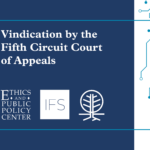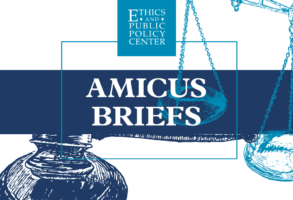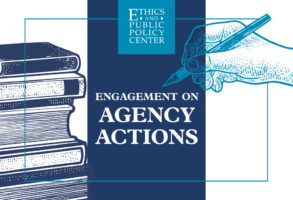Published January 2011
The Moral Landscape:
How Science Can Determine Human Values
By Sam Harris
Free Press, 304 pages
The American neuroscientist Sam Harris is best known as one quarter of “the Four Horsemen,” an informal posse of popular intellectuals that traverses the media circuit condemning religious belief and defending atheism. The apocalypse has been kind to this bunch. While superstar status has been conferred upon only one member, Christopher Hitchens, the other three—Harris, Richard Dawkins, and Daniel Dennett—have all become new-media celebrities and have seen their book sales approach those of Hollywood memoirists and self-help gurus.
Accordingly, there are recognizable elements of show business and wellness-peddling attached to this movement, sometimes referred to as the New Atheism. One can easily find video clips of the four men engaged in impressive conversation, agreeing, sparring, razzing, and even casually imbibing like an erudite Rat Pack. The self-improvement message is very much the point: “Atheism,” Harris once wrote, “is nothing more than the noises reasonable people make in the presence of unjustified religious beliefs.”
The noise Harris makes in his new book, The Moral Landscape, is intended to demonstrate that morality, like atheism, is reasonable. The author seeks to follow in a long line of thinkers who have attempted to discredit moral relativism and establish a universal moral standard. While many have argued on philosophical grounds for the existence of a natural moral law in the universe, Harris appeals to science. What we know about human biology, he maintains, can guide us in determining moral values.
Harris begins with the idea that we must define morality as equivalent to well-being. Why is this? Well, because no one, he asserts, “sincerely believes” that we shouldn’t care about human well-being. If the author applies little scientific rigor in choosing his foundational building block, he’s quick to invoke it immediately afterward. For Harris, science plays a critical role in determining how one can increase well-being. The moral landscape, after which Harris has named his book, is an actual graph on which well-being correlates with peaks. In order to accept well-being as a demonstrable and explainable quantity, Harris writes, one must believe that “some people have better lives than others” and that “these differences relate, in some lawful and not entirely arbitrary way, to states of the human brain and to states of the world.”
Whereas philosophy can only offer theories about how our actions affect people, with science we can actually study the ways our decisions affect others. This provides us with an objective method for understanding whether our actions are good or bad. For example, neuroimaging demonstrates that experiencing “fairness drives reward-related activity in the brain, while accepting unfair proposals requires the regulation of negative emotion.” In order to increase general well-being, therefore, we ought to act fairly. What this means, Harris writes, is that “taking others’ interests into account, making impartial decisions (and knowing that others will make them), rendering help to the needy—these are experiences that contribute to our psychological and social well-being.”
He extrapolates from many studies and recommends solutions based on the data. Daniel Kahneman, a psychologist, has found that “a good is worth more when it is considered as something that could be lost or given up than when it is evaluated as a potential gain.” Humans have such a strong aversion to loss that we “generally err on the side of maintaining the status quo.” Harris sees this as a significant barrier to international peace negotiations, reasoning, “if each party values his opponent’s concessions as gains and his own as losses, each is bound to perceive his sacrifice as being greater.” The idea is to scientifically locate those instincts least conducive to well-being and curb them.
According to Harris, we will soon be able to compare and contrast various behavioral responses to a given situation and determine which one will create the highest peak on the moral landscape. One day, science may be able to answer the question “Would it be better to spend a billion dollars eradicating racism or malaria?” As research progresses, “we will find a path leading away from the lowest depths of misery and toward the heights of happiness for the greatest number of people.”
That this sounds a bit messianic for an outspoken atheist is but one of the frustrations of The Moral Landscape. Most of the others are also connected to Harris’s problem with faith. He maligns religion for a whole chapter and attacks it consistently in all the others. We have heard all this before in Harris’s two previous books, The End of Faith and Letter to a Christian Nation. Religion is irrational and violent, and its positive accomplishments have little to do with faith itself.
No book by one of the Four Horsemen would be recognizable as such without the requisite litany of religion’s defects. The problem is that this occupational focus draws the author away from areas of greater relevance to the issue at hand. Harris could have discussed how philosophy and science can work together in the arena of natural law, a subject that deals with defining a universal standard of morality; or addressed many of the natural-law arguments presented by philosophers and whether they, too, have something to say about moral standards. For if Harris acknowledges that science cannot yet generate the correct moral choices for all of man’s greatest challenges (putting aside that it probably never will), shouldn’t he give greater consideration to effective alternatives for moral guidance? More important, if we can only now begin to glean moral lessons from practicing the scientific method, doesn’t Harris owe his readers a thorough explanation for the decidedly non-scientific adoption of morality that’s been ongoing for thousands of years?
Nevertheless, Harris’s project to articulate a standard of morality, though it does not fully succeed, is especially important in light of the moral weakness that so frequently holds hands with today’s atheism. He quotes Joshua Greene, a neuroscientist, who argues that “there is sufficient uniformity in people’s underlying moral outlooks to warrant speaking as if there is a fact of the matter about what’s ‘right’ or ‘wrong,’ ‘just’ or ‘unjust.’” Greene claims that articulating a natural-law theory, even if it could be done, is pointless. Most of us, he reasons, believe in the same moral ideas, so we don’t need to articulate them so formally.
As we are locked in an open-ended battle with terrorists and leaders for whom Greene’s “sufficient uniformity” of morality is a fiction, we must not only do good but also defend good. To his credit, this is not lost on Sam Harris. He describes an encounter with a current member of President Obama’s Commission for the Study of Bioethical Issues, who lectures him on the Taliban. “You could never say that they were wrong,” she says, for they are entitled to their own valid beliefs. That Harris strains to counter such relativism with charts, graphs, and cat scans is a moral, if ineffective, undertaking in itself.











